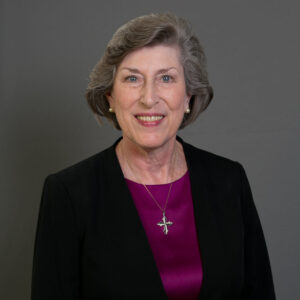
Readings:
Reading I: Acts 10:34a, 37-43
Psalm: 118:1-2, 16-17, 22-23 (24)
Reading II: Col 3:1-4
Gospel: John 20:1-9
When a loved one dies, the world seems at first completely out of kilter. Daily rhythms are disrupted. Relationships shift. Things that seemed important before take a back seat, while other urgent concerns come to the fore. A whole reorientation to life without the physical presence of the loved one is necessary. In the gospel, we catch a glimpse of how the first disciples of Jesus navigated the difficult days in the aftermath of his death, how they had to construct their lives and meaning anew.
At the Easter Vigil, we hear the enigmatic ending of Mark’s Gospel (16:1-7). It captures the bewilderment of the first disciples, in the figures of Mary Magdalene, Mary the mother of James, and Salome, who go to the tomb early on Easter morning, bringing spices to anoint Jesus’ body. They are startled to see that the stone has been rolled away from the tomb and the heavenly messenger announces that Jesus has been raised; he is not there. They are commissioned to tell this message to the disciples and Peter and that he is going ahead of them to Galilee, where they will see him. In a gospel where Jesus repeatedly admonished people not to say who he was, now free reign is given to proclaim him risen and alive. Throughout his gospel, Mark builds suspense, with the command, “don’t tell.” No one can tell the story of Jesus without knowing the whole story, which includes his passion, death, and resurrection. Only with these concluding pieces can one begin to speak rightly about the teacher, healer, and exorcist he was.
Ironically, while other characters in Mark’s Gospel broke the injunction to silence, now that the women are commanded to tell the story, they say nothing, out of fear (16:8). In a Gospel where the disciples constantly struggle to understand and often fail, it is tempting to see the women’s silence as the final failure. However, a closer look at the Greek words in v. 7 give us a different understanding of what the women have experienced. When the women flee from the tomb, they are “seized with trembling [tromos] and bewilderment [ekstasis]” (this is the translation of the NAB revised edition; the NRSV updated edition translates “terror and amazement”). The Greek word tromos is best translated as “trembling” as in the NABRE, but the word ekstasis is not well captured by “bewilderment” or even “amazement.” Ekstasis is a word used for a state of being in which consciousness is wholly or partially suspended as when one encounters the divine (see Acts 22:17 where the word is used for Paul falling into a trance while praying; similarly Acts 10:10). The women tremble and are taken outside of themselves in this epiphany experience, this close encounter with the power and presence of God. The only appropriate response to this is silence, awe, and wonder. Like the women, we are invited into a place of mystery.
Mark is a brilliant storyteller. Closing the Gospel with the women not saying anything, he invites the reader to finish the story. His is an open book, one that is never concluded. The hearer is asked to go back to Galilee, back to the beginning, to contemplate anew the meaning of all Jesus said and did in the light of his having been raised. As in funeral rites today, they remember all the various pieces of his life, which now take on new meaning. The original ending of Mark’s Gospel (16:8) ends in awe and mystery, into which the hearers are invited to enter. The resurrection is not simply a “happy-ever-after” ending or the fulfillment of our expectations. It turns the world on end, and defies explanation. It is God’s final parable.
The Gospel of John, which we hear on Easter morning, drives home the central question: where is Jesus now? A single character, Mary Magdalene, represents the voice of the community, as she seeks her beloved, and laments, “We don’t know where they have laid him” (20:2). Her search echoes that of the lover in the Song of Songs: “I sought him whom my soul loves; I sought him, but found him not” (Song 3:1). The question, “Where?” permeates the whole of John’s gospel. The first followers want to know, “Where do you stay?” (1:38). And in his final address to his disciples, Jesus speaks to them about an eternal dwelling place, which is not a geographical space but his very self (15:4-10).
In John 20 there are two parts to the answer of where Jesus is now. On Easter morning, we hear the first half: he has returned to the Father (20:1-9). Mary Magdalene, Peter, and the Beloved Disciple all verify that he is not in the tomb. The latter two return home, not understanding, but Mary refuses to leave and continues her search.
On Tuesday in the octave of Easter we hear the second half of the answer (John 20:11-18). Jesus himself appears directly to Mary Magdalene and tells her not to cling to him as the earthly person she knew previously. He directs her to go to the gathered community of the brothers and sisters: it is there that he is to be found alive (20:17). In the resurrection appearance stories, the gospel focuses more on what happens to us than what happened to Jesus. A gospel that began by reflecting on how “the Word became flesh and dwelt among us” (1:14) concludes with the Word becoming enfleshed in each individual believer and in the whole body of the faith community. That is where he is to be found, as his transformation is completed in our own.
Adapted from reflections previously published by Barbara E. Reid, O.P., in Abiding Word. Sunday Reflections for Year B. Collegeville: Liturgical Press, 2011. Pp. 36-37.
Sr. Barbara Reid, OP
President of Catholic Theological Union